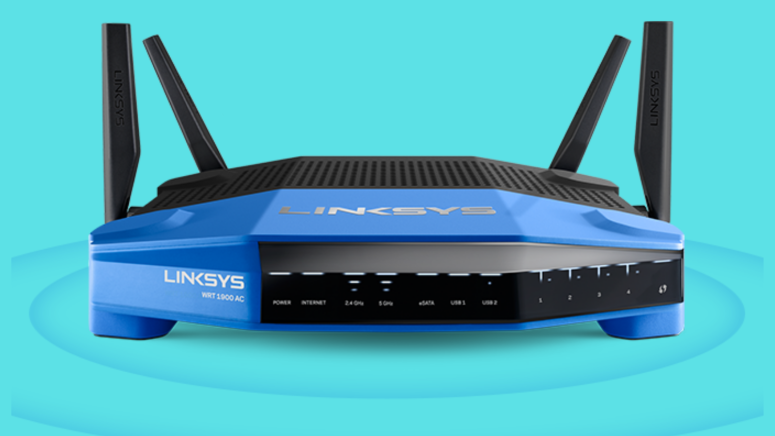
The 11 Best Linksys Routers to Buy in 2021 For All Budgets and Requirements
Linksys is a known brand in the field of wireless routers for personal and commercial use, thanks to the wide variety of options on offer and good customer service. The company offers routers catering to almost all budgets and feature requirements, and we must say that it has done an excellent job.
Compared to other router OEMs, Linksys offers a few features and enhancements that differentiate its products from the competition. For example, most Linksys routers offer good speed and great coverage along with MIMO capabilities. More importantly, these routers also feature user-friendly administrative controls along with data usage analytics that helps you get the most out of your ISP’s plan.
For this article, several factors were considered for narrowing down the best Linksys router options available in 2021. These include the maximum potential throughput, number of bands supported, maximum coverage offered, connectivity options, software UI, etc. The popularity of these routers with buyers was also taken into account.
So, with that information, here are the 11 best Linksys routers available on the market currently.
1. Linksys EA9500
The Linksys EA9500 is not just one of the best Linksys routers available but is also one of the overall best routers of 2021. With a 1.4 GHz dual-core processor and support for MU-MIMO, each device can connect independently to the tri-band router and without affecting the bandwidth of the other devices for a total potential throughput of about 5.3 Gbps. The EA9500 is not the most aesthetic-friendly of the lot, but coverage even in large homes shouldn’t be a problem with eight powerful antennas. However, if you notice dead spots, you can use the Linksys Max-stream range extender to extend coverage further. The presence of 8 Gigabit Ethernet ports caters to those who prefer wired connections.
There have some reported concerns for connectivity issues and signal drops, but when it comes to overall performance and range, the EA9500 is hard to beat. Some of these concerns can be easily fixed by disabling MU-MIMO or IPv6, depending on the problem. Those who’d prefer fiddling with some of the advanced firewall options will be pleased to know that flashing DD-WRT on this router is possible.
- Pros: Great coverage; Tri-band
- Cons: Heavy; Pricey; Issues with enabling MU-MIMO
2. Linksys WRT1900ACS
The Linksys WRT1900ACS is a more affordable option for those who are looking for a good long-range router. It is one of the best wireless routers for home use with a combined theoretical throughput of 1.9 Gbps. It does not sport the 5 GHz multiplexing option as the WRT3200ACM, but home users are likely not to be affected by this. The 4 antennas are boosted well enough to provide optimal signal strength and coverage in large homes or even multi-story buildings, and they are adjustable. Although the WRT1900ACS lacks MU-MIMO, the onboard 1.6 GHz dual-core CPU ensures easily catering to multiple devices at once without any noticeable lag.
File sharing enthusiasts will be pleased to know that the WRT1900ACS offers an eSATA port for easily connecting NAS devices and USB drives at full speed for fast media sharing across the network. When configured as a repeater or bridge, the WRT1900ACS can extend the range without having to configure multiple SSIDs. This being a Linksys router, installing custom firmware can greatly enhance the performance of the router. The only major gripe with the built-in software is that there no monitoring tools available, and you’ll have to rely on third-party offerings.
- Pros: Open-source ready; Powerful antennas; Range extender function built-in
- Cons: No built-in data monitoring; Stability issues on the 5 GHz band; No MU-MIMO
3. Linksys EA6350
If all you need is a basic but capable router under $100, the Linksys EA6350 is a very good option. Its dual-band support can yield a maximum throughput of 1.2 Gbps, and the included USB 3.0 port allows fast transfer of data on storage devices to other devices in the network. The EA6350 does not look to break many records when it comes to operating range or speeds as it sports only a dual antenna set up, but they have adequate power. Their positioning can be adjusted to maximize coverage in a small apartment.
Beamforming capability is available, which is somewhat of a rarity at this price. While setting up the router is a fairly hassle-free process, make sure to update the firmware to the latest version as there have been some reports of having an unstable connection in the 5 GHz process. Disabling the MU-MIMO function if you don’t need it also helps to increase connection stability.
- Pros: Dual-band; beamforming; MU-MIMO function
- Cons: Only 2 antennas
4. Linksys WRT3200ACM
The Linksys WRT3200ACM was one of our recommendations for the best secure routers category. The WRT3200ACM uses multiplexing to double the 5 GHz bandwidth using what Linksys calls as Tri-Stream 160. Unlike most other routers, the WRT3200ACM can operate in clear dedicated airspace instead of the other crowded ones using Dynamic Frequency Selection (DFS). This means less interference when it comes to using it alongside other wireless devices such as microwaves or wireless input devices, or even other routers in the vicinity, which also occupy the 2.4 GHz band. This also adds to the security aspect of the router and the clients connected to it as well.
Like other Linksys routers, installing custom firmware can eke out more performance out of this router. Linksys routers are generally OpenWRT compatible, so it is easy to download a compatible open-source firmware to get new features and advanced security options. The included smartphone app, however, should get you by for basic security functions.
- Pros: 5 GHz multiplexing; DFS; OpenWRT compatible
- Cons: Default firmware is not feature-rich.
5. Linksys MR8300
If you are looking for the best Linksys router for a large home that also supports mesh networking, the Linksys MR8300 is the one to opt for. The MR8300 is a tri-band router with a total throughput of 2.2 Gbps. It may not be much, but the speed should be enough for most streaming and gaming purposes. The MR8300 also supports MU-MIMO so that all devices get to access their share of the network without bogging it down. The MR8300 is easy to set up and can be completed directly from your mobile device.
A good feature of the MR8300 is that it also doubles-up as a ready-to-use mesh router and seamlessly integrates with the Linksys Velop mesh network as a primary node. Therefore, users who wish to extend their Wi-Fi need to buy the Velop nodes instead of the entire setup. If you want to utilize the mesh networking capabilities of the MR8300, keep in mind that you can only do so with a Velop mesh network and not with mesh nodes from other OEMs. For a router that offers a good feature-set, good coverage, and a built-in mesh network, the Linksys MR8300 is priced appropriately and is a great choice for those whose network needs are mid-range.
- Pros: Good coverage; Built-in mesh network
- Cons: Only one USB port.
6. Linksys AC3200 WRT32X
The Linksys WRT321X is one of the few routers to come with support for the Killer Prioritization Engine. Killer works with Wi-Fi solution providers to create products that accelerate game performance over the network by reducing peak pings. The Linksys WRT32X incorporates Killer’s network prioritization enhancements to decide which data packets need to be prioritized to deliver a great online gaming experience.
A welcome feature is that the WRT32X can sync settings with other Killer-enabled PCs and laptops, such as those from Alienware or other gaming brands. Those using other devices such as Xbox One or PS4 consoles can prioritize their game bandwidth via the custom interface. There have been some issues with the firmware of the device and the lack of advanced security options. However, since the device is OpenWRT compatible, you can install compatible custom firmware to unlock additional functionality.
- Pros: Killer QoS; Great for multiplayer gaming
- Cons: Lacks advanced security options
7. Linksys RE9000 Range Extender
The Linksys RE9000 is a range extender for large homes and office spaces, which require excellent speeds till the last mile. The RE9000 is a tri-band range extender with speeds of 400 Mbps on the 2.4 GHz band, 867 Mbps on the 5 GHz band, and 1,733 Mbps on the other 5 GHz band. Unlike most range extenders, the RE9000 uses the 5 GHz band for backhaul instead of the 2.4 GHz band. The RE9000 provides four Ethernet ports for wired connectivity, but there’s no USB port available, so sharing USB storage over the network is not possible.
The RE9000 is fairly easy to setup. Linksys even provides a Spot Finder tool that allows users to easily determine if a particular placement is right for the extender. The performance of the RE9000 is great across the bands and the given range, although the 2.4 GHz band could use some improvements. Downlink speeds tend to be favored over uplink in the RE9000. While the RE9000 is one of Linksys’s best range extenders under $150, the lack of 2.4 GHz back-haul means that the primary router should invariably feature a 5 GHz band.
- Pros: Affordable range extender; Coverage up to 10,000 sq. Ft.
- Cons: Only 5 GHz back-haul; No USB port
8. Linksys EA8300
The Linksys EA8300 features a tri-band setup that can cater to demanding users who have multiple wireless devices that stream 4K videos or games. The router also comes with a quad-core CPU for segregating traffic without any bottlenecks. The included 4 antennas are powerful enough to cover a mid-sized home without any dead spots. Perhaps, one of the best features of the Linksys EA8300 is the ability to use less-congested airspaces to minimize packet loss and interference.
There have been a few reports of connectivity issues, but most of them have been resolved by new software updates or by ensuring adequate power supply to the router.
- Pros: Tri-band; DFS certified
- Cons: None as such
9. Linksys EA7500
The Linksys EA7500 is one of the best wireless routers for home use at a price that is within reach of many. With a maximum throughput of 1.9 Gbps, the Linksys EA7500 should be able to cater to moderately-sized homes with a reasonable number of devices. The router can deliver 3 simultaneous data streams thanks to its 3x3 wireless AC technology. Beamforming ensures that clients get a good signal even when not placed directly in the line of sight while the dual-core CPU keeps bottlenecks out of the way.
A good thing about the EA7500 is that it enables easy setup without requiring a CD. The web interface is capable enough, but flashing custom firmware is easy as well. Parental controls are available but not infinitely customizable. Issues have been reported with its beamforming abilities, so if the client cannot get a good signal, try changing its placement.
- Pros: 3 wireless streams; Easy setup
- Cons: Beamforming not up to the mark
10. Linksys EA9300
If the Linksys EA9500 is one of the best performing routers, the EA9300 comes in at a close second. The EA9300 sports 6 antennas that offer a great range and signal strength. The 1.8 GHz quad-core CPU might seem a bit overkill for a router, but it does a good job of ensuring the free flow of upstream and downstream traffic. For further extending the range, the EA9300 can be paired with a Max-stream Range Extender to remove any dead spots.
However, we’d suggest you keep expectations tempered if you’re planning to purchase this router. It is a great performer, no doubt, but some of the promised features such as LAN aggregation, DFS channel support, and OpenVPN were not released in the shipping version. Linksys might release a future update to address this, so we’ll have to wait and see.
- Pros: Great range; High speeds
- Cons: Some features missing in the default software
11. Linksys Velop Tri-Band AC2200
The Linksys Velop is a mesh router system that comes in packs of two or three units called nodes. The Velop is designed well and will complement most home decors. One can be used as the main router or modem, while the other can be used as an extender. The setup process is easy, but there’s no web interface, and you need to use a smartphone app to get things running. The Velop is a tri-band router with one of the 5 GHz bands used as a dedicated backhaul to ensure connectivity between the nodes.
The performance of the Velop is typical of most mesh routers, but the back-haul has limited bandwidth. If you place the nodes far apart, there will be a loss of speed to the clients connected to these nodes. You still have the option of linking these nodes with an Ethernet cable, but it sort of defeats the purpose of having a wireless mesh in the first place. The app does not offer too many customization options, so power users would be left wanting for mode. It should suffice for the casual home user, though. The pricing also puts the Velop at a disadvantage compared to most mesh routers on the market. However, we can expect more features via future firmware updates and a price drop coming soon.
- Pros: Good performance; Sleek design
- Cons: Expensive; Limited back-haul bandwidth
Dear readers, that would be all for our list of the best Linksys routers to consider buying in 2021. If you have additional questions, don’t hesitate to post a comment below. We will do our best to provide a timely response.












